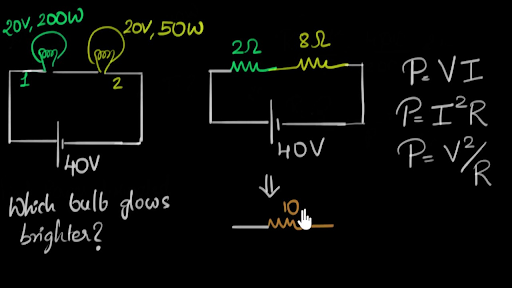This makes it very easy to apply ohm s law.
A simple electric circuit has 20v battery and resistor of 100 ohm what is the current.
The total resistance of the circuit is 2 5 7 14 ω.
A simple electric circuit in which a closed path for current to flow is supplied by conductors usually metal wires connecting a load to the terminals of a battery represented by the red parallel lines.
To verify that resistances in series do indeed add let us consider the loss of electrical power called a voltage drop in each resistor in figure 2 according to ohm s law the voltage drop v across a resistor when a current flows through it is calculated using the equation v ir where i equals the current in amps a and r is the resistance in ohms ω.
There is also a 450 ohm resistor on the circuit.
Unfortunately the boards current is too great for the memory chip.
The zigzag symbol represents the single resistor and includes any resistance in the connections to the voltage source.
In the above circuit there is only one source of voltage the battery on the left and only one source of resistance to current the lamp on the right.
The board has an electric circuit that allows electricity to flow from the ok ayers battery chip that manages memory.
The same current passes through each resistor so each resistor does its job as you would expect.
In a simple electric circuit ohm s law states that v ir where v is the voltage in volts i is the current in amperes and r is the resistance in ohms.
A simple electrical circuit contains a source of voltage a power supply such as a battery generator or the utility wires coming into your building a wire to carry current in the form of electrons and a source of electrical resistance in reality such circuits are rarely simple and include a number of branching and re joining points.
Assume that as the battery wears out the voltage decreases at 0 01 volts per second and as the resistor heats up the resistance is increasing at 0 01 ohms per second.
Voltage drops across any component in spice are referenced by the node numbers the component lies between so v 1 2 is referencing the voltage between nodes 1 and 2 in the circuit which are the points between which r 1 is located.
Let s see how these equations might work to help us analyze simple circuits.
For example a series circuit has a 2 ω ohm resistor a 5 ω resistor and a 7 ω resistor.










